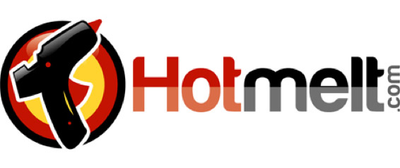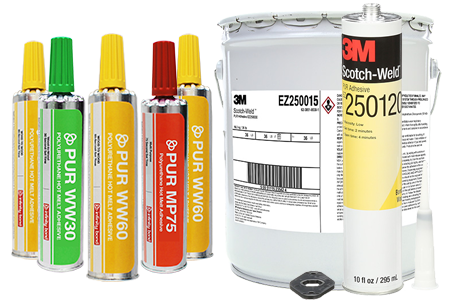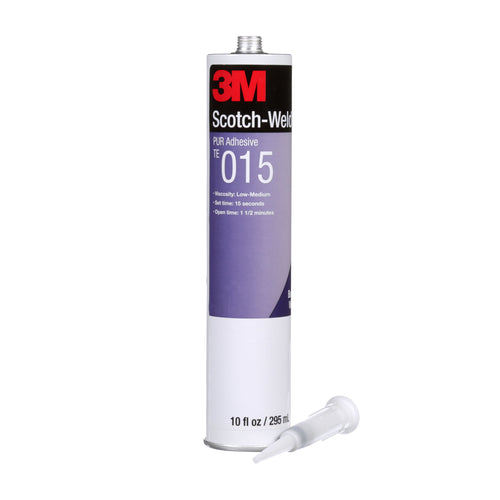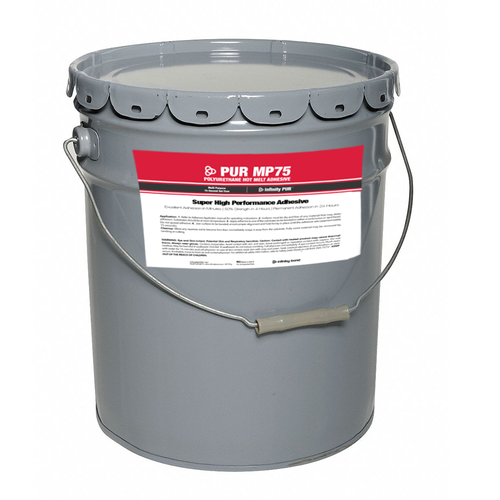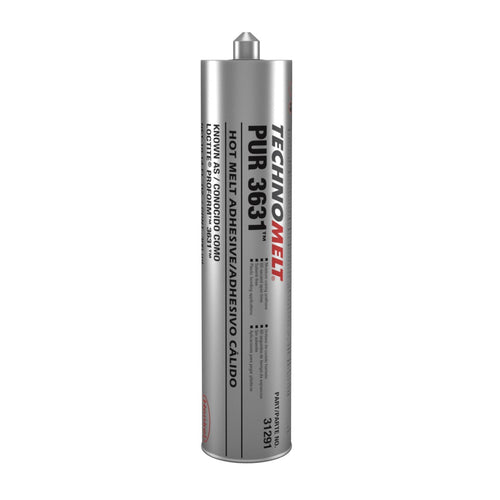Polyurethane hot melts are being used more and more in industries from high volume manufacturing to DIY and home repair. This is because PUR hot melts have some amazing characteristics that appeal to a huge set of users. PUR hot melts are non-toxic, quick setting, offer great temperature and weather resistance and are affordable at any volume requirement. Here is the Complete Guide to Polyurethane PUR hot melts to answer any questions you may have about this exciting adhesive technology.
Overview: the PUR hot melt technology
Discovered in the 1980s in Switzerland, the PUR hot melt technology has enjoyed increasingly popularity, first across Europe, and then across the Atlantic in the U.S.A.
- What exactly is PUR? Polyurethane, or PUR, simply is a string of polymers that share similar chemistry, typically linked together by urethane (carbamate, an organic compound derived from carbamic acid).
- What's different from traditional hot melts? PUR is a so-called “reactive” adhesive because a chemical reaction needs to take place for the strong adhesive bond to work. Some moisture needs to be present to spark that chemical reaction and create the adhesive bond. The good news is that sufficient moisture exists in the air around us and usually in the material being glued.
- A 24-hour period of curing allows the moisture in the air to react with the PUR hot melt to create the strong bond.
- PUR eliminates VOCs. The advanced technology and its chemical reaction with moisture free PUR hot melt from the need for solvents or formaldehyde—ensuring both a safer work experience and final product.
Characteristics of PUR hot melt
Following are key characteristics and benefits of using PUR hot melt as your go-to adhesive.
- It creates a stronger and longer lasting bond than traditional hot melt.
- It is flexible and adapts to different uses: it can be set hard or remain rubbery.
- It tolerates the widest temperature range and therefore is just as effective for indoor and outdoor applications.
- It is fast-curing. (Note: if the atmosphere tilts towards arid, it may need a longer curing time.)
- It achieves a high-quality bond with products that typically are difficult to bond, including nonporous materials. It works with materials that are different from each other.
- Less of the adhesive is needed for a strong bond, and less is wasted during the application process.
- PUR is known for its ease of use: no mixing or measuring is required.
- Its ease of use and fast curing time translates into more rapid production, which leads to lower labor costs.
- Once set, it can be sanded and/or painted, and it will not shrink or curl.
Top applications for PUR hot melt
Many industries now incorporate hot melt technology into their processes. Everything from footwear to mattresses to boat construction has pivoted to gluing with PUR hot melt in order to maximize ease of use and flexibility, take advantage of temperature and moisture tolerances, and reduce labor time. Below are brief descriptions of the top four applications for PUR holt melt.
- Cabinetry and furniture making rely on hot melt adhesives. This blog offers specific tips on assembling cabinets and drawers using a hot melt adhesive— which “provides superior strength, precision and quality without the time or expense of a hammer and nails.” Looking for information on APAO hot melt to use as a furniture adhesive? Look no further than this blog for specifics.
- Woodworking—whether it’s your hobby or your commercial industry—benefits from an array of PUR hot melt applications. Rapid curing and low strength properties make this adhesive your go-to in the woodworking shop. If you are on the design end of woodworking, nothing supports your design work like hot melt glue for creating maquettes to finalize your design.
The website Canadian Woodworking & Home Improvement suggests that you “Stack and hot-glue many pieces to save time in the shop,” and “When working with small parts, use hot melt glue to fasten them to larger pieces to make machining them safer.”
The blog, Woodworking Hot Melt Essentials, helps guide you through the experience of selecting the right adhesive or the job at hand. Two top PUR products for use in woodworking are available here and here.
- Product Assembly: Versatility is the name of the game when it comes to Product Assembly adhesives. PUR hot melt does the job regardless of how tough your bond substrates are. It adheres to plastics, glass, PVFs, aluminums, stainless steel and other metals. Most electronic and automated assembly lines benefit from a fast-curing adhesive that doesn’t need drying time or measuring, and bonds regardless of temperature swings or contact with water.
As our blog, How Hot Metal Molding Can Replace Traditional Epoxy in Manufacturing, states, “The advantages of low pressure hot melt molding over traditional epoxy include ease of application, the elimination of curing times and an environmentally friendly process. Hot melt molding is particularly useful within the automotive and medical device industries which require the preparation of connectors and switches that need to be sealed and protected from water and dust.”
A top PUR product for general assembly use may be found here.
- Construction: Hot melt technology excels when it comes to window sealants, gaskets, foams, corrugated, fabrics, plastics, particle board, and light metal applications. Flooring, remodeling, countertops, and shower walls all benefit from hot melt adhesives’ ease of use and quick curing time. Let our blog on Solid Surfaces guide your use of hot melt adhesives in areas such as bathrooms.
Key differences between PUR hot melt and traditional hot melt
The PUR hot melt technology, with its chemical reaction with moisture, has reduced or eliminated heat-related disadvantages of traditional hot melt.
- PUR hot melt works better with substrates that are sensitive to high temperatures.
- Bonds remain strong at higher temperatures with PUR technology.
- PUR’s reactive technology creates a higher strength bond than most other adhesives.
- The quick cure time and superior bond strength mean that in a manufacturing environment, the substrate bonds formed by PUR’s reactive chemistry will not loosen.
-
PUR’s flexibility, along with its wide temperature tolerance, and water and chemical resistance ensure its effectiveness in a wide range of both indoor and outdoor environments.
Check out this tensile strength test between traditional hot melt adhesives and PUR hot melt:
The future of PUR is here
Looking for a replacement for the discontinued Titebond HighPURformer line? Our Infinity PUR offers you the same formula and cartridges for ease of transition.
Your success is our business: please contact us with any questions about our products or applications.
Related Products: Infinity Bond Flex 50 PUR Hot Melt Applicator
